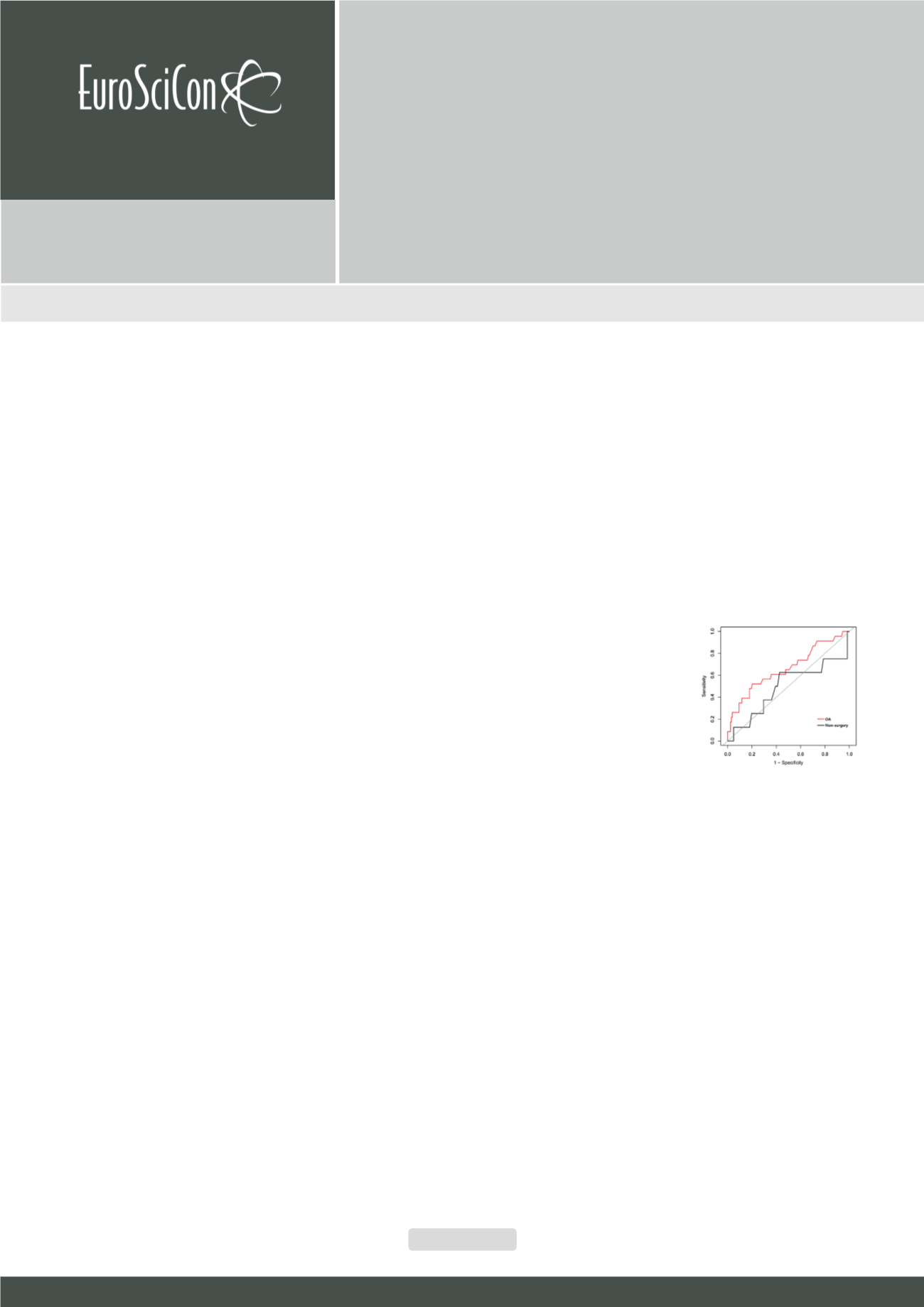

Page 88
May 24-25, 2018
London, UK
Vascular Surgery 2018
3
rd
Edition of World Congress & Exhibition on
Vascular Surgery
Journal of Vascular and Endovascular Therapy
ISSN: 2573-4482
Statement of the Problem:
Abdominal aortic aneurysm (AAA)
affects about 10% of men aged 70 and the mortality can up to
85 to 90% once it ruptures. The association between admission
glucose and ICU mortality in AAA patients remained controversy
in previous studies. Though hyperglycemia has been reported
as the important determinant of mortality for AAA in several
retrospective studies, the significant association was not
observed between the trend in AAA mortality and trend in blood
glucose from the population in 19 western countries. We aimed to
replicate these studies and assessed the effect of hyperglycemia
on ICU mortality in patients with AAA.
Methodology & Theoretical Orientation:
A retrospective study
was conducted in Multiparameter Intelligent Monitoring in
Intensive Care III (MIMIC III) database. The potential risk factors
were selected from the univariate analysis and applied into the
multivariate analysis. Then, the receiver operating characteristic
(ROC) curve and the area under the curve (AUC) were used to
confirm the power of predictive effect.
Findings:
A total of 225 patients with 32 ICU deaths and 192
patients alive were included. After the correction of potential
confounding factors, such as age, AAA condition, diabetes and
so on, admission glucose was significantly associated with the
mortality in patients undergoing surgery (OR 1.009; 95% CI 1.002-
1.015), not observed in non-surgery patients. Further ROC curve
indicated that glycemic status had the better predictive value for
the mortality in the surgery group (AUC=0.6624) than the non-
surgery group (AUC=0.4908). The glucose level at 200 mg/dl was
demonstrated as the best threshold.
Conclusion & Significance:
The
association between high glucose
concentration and poor survival
was confirmed in the AAA patients
undergoing surgery; but not
observed in the non-surgery group,
which provided the potential
answer to the controversy and
highlighted the positive screening
and aggressive glucose control
before AAA surgery.
Recent Publications
1. Kai H, Xixia L, Miaoyun L, et al. (2017) Intraoperative
nerve monitoring reduces recurrent laryngeal nerve
injury in geriatric patients undergoing thyroid surgery.
Acta Oto-Laryngologica 137(12):1275-1280.
2. Huang K, Luo D, Huang M, et al. (2013) Protection of
parathyroid function using carbon nanoparticles during
thyroid surgery. Otolaryngology-Head and Neck Surgery
149(6):845-850.
3. Tang Y, Chen J, Huang K, et al. (2017) The incidence, risk
factors and in-hospital mortality of acute kidney injury in
patients after abdominal aortic aneurysm repair surgery.
BMC Nephrology 18(1):184.
4. Luo D, Chen H, Lu P, et al. (2017) CHI3L1 overexpression
is associated with metastasis and is an indicator of
poor prognosis in papillary thyroid carcinoma. Cancer
Biomarkers 18(3):273-284.
Admission glucose and ICU mortality in abdominal aortic
aneurysm patients: a retrospective analysis of the MIMIC-III
clinical database
Qinchang Chen
1
and
Huang Kai
2
1
Sun Yat-sen University, China
2
Sun Yat-Sen Memorial Hospital, China
Qinchang Chen et al., J Vasc Endovasc Therapy 2018, Volume 3
DOI: 10.21767/2573-4482-C1-002
















